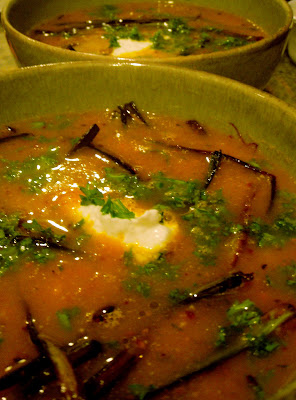Pictured above are the leaves of a ginseng oolong after one rinse and one brewing cycle. I was too eager to drink this tea to capture the leaf in its most recognizable form, which is dry. In that state, the shape of the rolled leaves combined with the dusting of powdered ginseng root give the tea a nuggety, Raisinet like appearance.
By now you may have noticed my disdain for flavored teas. It's proportional to my love of teas that magically happen to taste like other things, like Peachy Dan Cong (peaches), Gyokuro (roasted chicken), and Puehr (a cave). Deceptive flavors coaxed from nothing but camellia sinensis are still the most impressive to me, but there is a place for quality additions, both historically and as a matter of taste. This tea is such a one.
The slightly sweet, earthy flavor of the ginseng blends perfectly with the mineral and floral tones of the oolong. The two work together as in a dance, complimenting each other with neither taking the lead. Compare this to the modern flavored teas I so loathe. You'll find them increasingly at places like Teavanna, now in a mall near you, where you'll taste blends such as the "cookie-like" Almond Biscotti Black Tea.






































